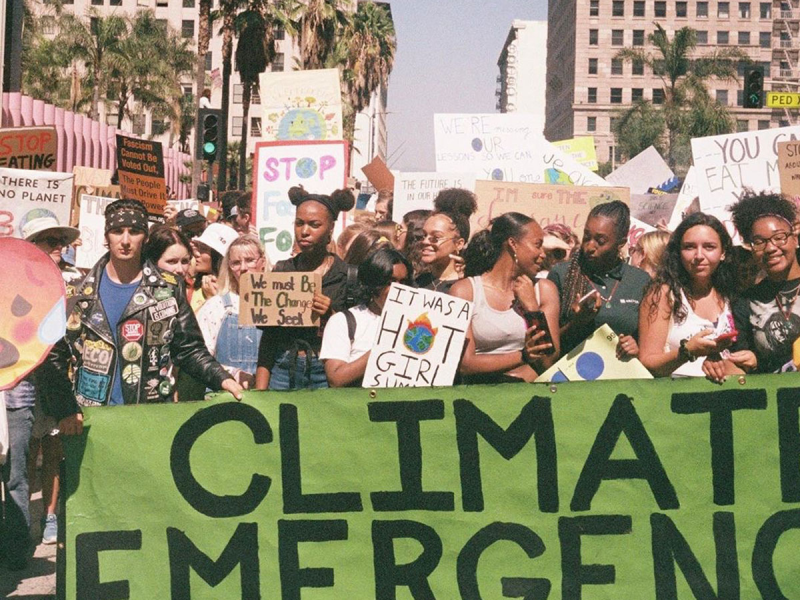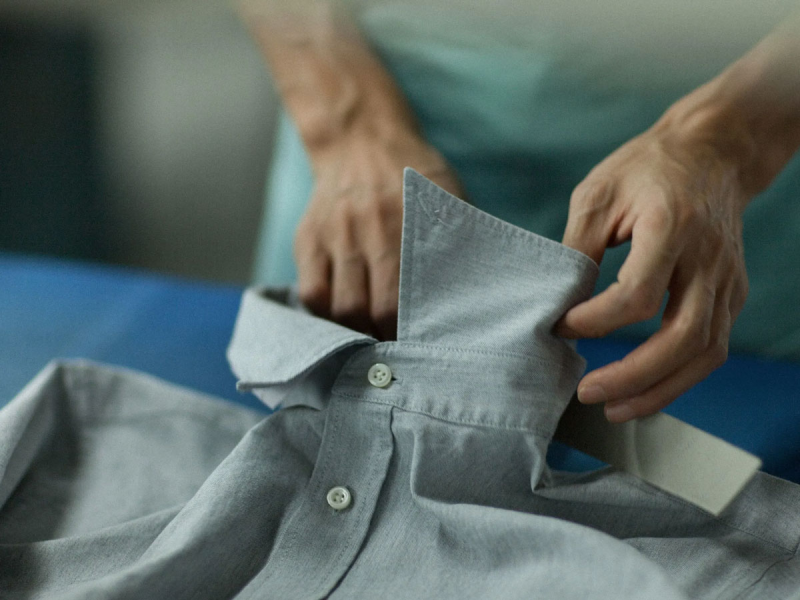- Sustainability is becoming a big trend in the packaged goods and fashion industry as environmental concerns are increasingly top of mind for consumers.
- The U.S. sustainability market is projected to reach $150 billion in sales by 2021, according to Nielsen.
- We used clothing brand Reformation as a case study of sorts and spoke with experts in consumer behavior and the fashion industry to better understand the sustainability movement, why consumers love it, and how more brands can do their part.
A good product is no longer enough to win a consumer’s favor. Shoppers want more than just quality, often looking for products and brands that align with their personal values.
It seems obvious. Why support a brand financially if we don’t agree with their social and environmental values? In the face of climate change, those of us who care enough are ready to consider the consequences of our shopping habits.
The fashion industry is one of the biggest culprits when it comes to pollution. According to the United States Environmental Protection Agency, 26 billion pounds of textiles end up in landfills each year. Realistically, most of us won’t quit shopping cold-turkey. We may not even give up all fast-fashion. But, many people are willing to change their habits for the better.
Dr. Matt Johnson, professor at Hult International Business School and founder of neuromarketing blog Pop Neuro, says, "There is accumulating evidence that consumers are impacted by the perceived sustainability of [a] brand, and further, that consumers are willing to pay a premium for products from a sustainable brand over a non-sustainable competitor brand."
Value and ease of purchase are still the main drivers of purchase decisions, but sustainability is becoming a bigger factor. A 2019 survey led by Hotwire found that 47% of internet users worldwide had ditched products and services from a brand that violated their personal values. Protecting the environment topped that list.
Traditionally, you'd find labels like "organic" and "sustainably-grown" in the grocery aisle, but the same verbiage is becoming popular in the fashion industry, too.
Sustainable fashion doesn't seem like a natural pairing - fashion's trend-driven ways press us to buy new pieces every season, while sustainability asks us to pare down - but more and more brands are bettering their business with eco-friendly practices. Reformation is one of the brands leading the charge.
Yael Aflalo, Reformation's founder and CEO, was in the fashion industry for years and "really started to dislike a lot of the harmful industry practices - overprinting lookbooks and tossing 80% of them, yards of leftover fabric getting thrown out," she says. "On a trip to China, I saw first-hand the devastating amount of pollution there from manufacturing, and I knew that I had to make a change and stop contributing to the fashion industry's waste."
The brand's flowy dresses, dressy tops, cozy sweaters, jeans, and more, are beloved by the "it-girl" set. But, they're also made sustainably - everything from the fabrics used to the manufacturing processes to the hangers used in-store are chosen with keeping a minimal carbon footprint in mind.
Reformation is proof that you can be sustainable without sacrificing style. "Without sacrifice" is the key. Aflalo wants shoppers to see how easy it is to live a more sustainable lifestyle. "The success of our sustainability initiatives is determined by how effortless they are to adopt," she says. "We start with small digestible solutions that people can incorporate into their daily lives to make an impact and highlight how those changes can affect the big picture." Buying clothing that you were going to buy anyway, but choosing the item that was made ethically and with less waste is sustainability made easy. There's no significant behavior change, but a simple choice that can ultimately make a big difference.
Even if being sustainable isn't a personal priority, the idea of using a purchase to do good is attractive to many shoppers.
Purchasing expensive products that are environmentally-friendly in some way can help us compensate for the guilt we feel about our self-indulgent spending, Dr. Johnson explains. "A part of us feels guilty about the money we're spending on a new Prius, for example, but the fact that it's a product which has an environmentally friendly angle helps us feel better about the purchase."
For many shoppers, though, choosing a sustainable product is a personal priority, and they want people to know it. It's called Social Signaling, a theory that we buy certain things because of what they say about us to the people around us. People buy designer bags not only because they like the style, but because of the message they tell the world when they're holding one and the social status the product imbues.
The same goes for the environment. Dr. Johnson shares the example of a new Prius. "We may buy a Prius (at least in part) because it is a purchase reliably associated with environmental consciousness, and we want to signal that we're environmentally conscious," he says. And, it turns out that these social motivations are more important than practical features like gas mileage. In a 2007 survey, Prius owners proudly reported that the primary reasons for purchasing the car are because it "makes a statement about me" and that "it shows the world that its owner cares."
While we may be willing to pay more for something that is environmentally friendly, the ultimate goal should be for sustainability to be accessible.
Aflalo wants to break down the notion that sustainability is inherently more expensive. By definition, she says, it isn't - instead, it is "related to less waste and material use, which can actually lead to savings ... But there are some aspects of responsible manufacturing and better materials that may lead to marginally higher costs. So as we scale our business, we are committed to making our stuff even more accessible and passing on efficiencies and savings to our customers wherever possible."
A $28 Reformation tee may seem pricey when compared to a fast-fashion option, but the sustainable fashion movement asks us to consider environmental cost, not just the cost to our own wallet.
There are plenty of brands capitalizing on the movement. Everlane has become a popular choice with its self-proclaimed "radical transparency" in everything from pricing to using innovative materials, like recycled water bottles. Naadam is redefining luxury with its affordable, sustainable cashmere that's better for the environment and its workers.
It's not just startups that are getting in on the positive trend. Big-box retailers are adding more sustainable products to their aisles and committing to cleaning up their practices. The "Clean at Sephora" section of the beauty giant brings eco-friendly, clean beauty products to the masses. Target has a goal to use 100% sustainable, organic cotton in all products from Target-owned brands by 2022. Nordstrom recently launched a Sustainable Style category to help shoppers easily find responsibly-made products.
These efforts surely attract a more sustainably-minded demographic, and it's something worth showing off. Dr. Johnson thinks sustainable brands can certainly use marketing and branding to their advantage. Even though they are typically for-profit companies, he says, with a genuine sustainability foundation, non-profits are more likely to partner with these brands. In turn, this likely adds credibility to sustainability claims.
For Reformation, sustainability plays a significant role in branding.
"Being naked is the #1 most sustainable option. We're #2."
The brand's kitschy slogan is an homage to their sustainable practices, but that's just the start of it. "In recent years," Aflalo says, "we've taken a more formalized approach to transparency through initiatives like RefScale, factory tours, and sustainability reports, educating consumers about the environmental impact of fashion." On the brand's website, you can find plenty of information about its sustainable practices, including a quarterly Sustainability Report that delves deep into the brand's overall environmental footprint.
As someone who has started a fashion brand of their own, Aflalo understands it's not always easy to completely switch up production in favor of more sustainable approaches, which is why she suggests starting small. "To start," she says, "[brands] can focus on sustainable materials - so they can source an organic or better material, and just plug that into their same business model ... This one is a bit harder, but look into operations and business impact to offer better transparency around manufacturing processes (which is often the dirtiest part of the industry) and hold your business accountable to start making changes. The big and small changes will add up," she says. "If we want to have transformational change, we all need to participate."
The same goes for us, the shoppers. We may not all be ready to be minimalists and pare our wardrobes down. We may not be able to give up eating meat, driving to work, or wearing cashmere, but we can tweak these habits to make them better for the planet. Carpooling, meatless Mondays, or shopping with an eye for sustainable materials are small changes we can make for the better.
Shop sustainable fashion at Reformation.
Check out Dr. Johnson's blog about consumer psychology.
Read more about some of our favorite sustainable brands:
- Patagonia just won the United Nations' top environmental honor for entrepreneurial vision - here's why we're not surprised
- B Corps are businesses committed to using their profit for good - these 14 are making some truly great products
- Allbirds' sustainable 'Tree' sneakers were a game changer when they debuted in 2018 - here's how they've held up after over a year of regular wear
- We tried Everlane's recycled cashmere sweaters - they're more sustainably produced and just as comfortable as the originals
- A new online startup is quietly making waves in the denim world - its under-$100 jeans and sustainable production practices are 2 big reasons why



